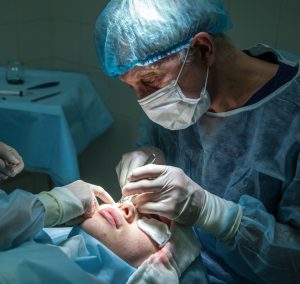The corneal limbus is very susceptible to infection, while the central part of the cornea has only low levels of viral replication.
In times of pandemic, every health treatment carries risks that were not even conceivable before. This is true both for simple eye examinations that, above all, for the eye surgeries of all kinds and, to a maximum extent, for organ and tissue transplants, such as corneal transplants.
It therefore becomes extremely important to know to what extent the different ocular tissues can become the seat of viral replication.
An interesting pre-print study is dedicated to this sensitive topic - pre-prints are complete drafts of scientific papers, still undergoing peer-reviewed certification, that the National Institute of Health (NIH) has decided to make available to the public as sources of knowledge useful for the containment of Covid-19 infection.
SARS-CoV-2 Infection of Ocular Cells from Human Adult Donor Eyes and hESC-Derived Eye Organoids
Makovoz B , et al. Paper
under consideration at Cell Press.
Starting from the assumption that aerosols constitute the primary route of propagation of SARS-CoV-2, the researchers set out to assess whether the visual apparatus constitutes a potential route for the virus. To this end, the ability of viral replication was tested both on isolates of eye cells taken from donor-cadaver eyes as well as on a organoid model of eye, obtained from pluripotent stem cells. The expression of ACE2 and TMPRSS2, essential proteins that mediate SARS-CoV-2 access into cells, was also measured.
 Research has established that the corneal limbus is very susceptible to infection, while the central part of the cornea shows only low levels of replication. Transcriptional profiling of the limbus during SARS-CoV-2 infection found that while type I or type II interferons were not detectable in the lung epithelium, a significant inflammatory response was detected.
Research has established that the corneal limbus is very susceptible to infection, while the central part of the cornea shows only low levels of replication. Transcriptional profiling of the limbus during SARS-CoV-2 infection found that while type I or type II interferons were not detectable in the lung epithelium, a significant inflammatory response was detected.
These data suggest that ocular tissue can be directly infected by SARS-CoV-2 and, therefore, constitute a route of entry, requiring protective measures.
For an in-depth overview of the biomolecular aspects, you can read the study in full via this link
https://www.ncbi.nlm.nih.gov/pmc/articles/PMC7385483/
Good reading
You might also be interested in:
Dr. Carmelo Chines
Direttore responsabile
